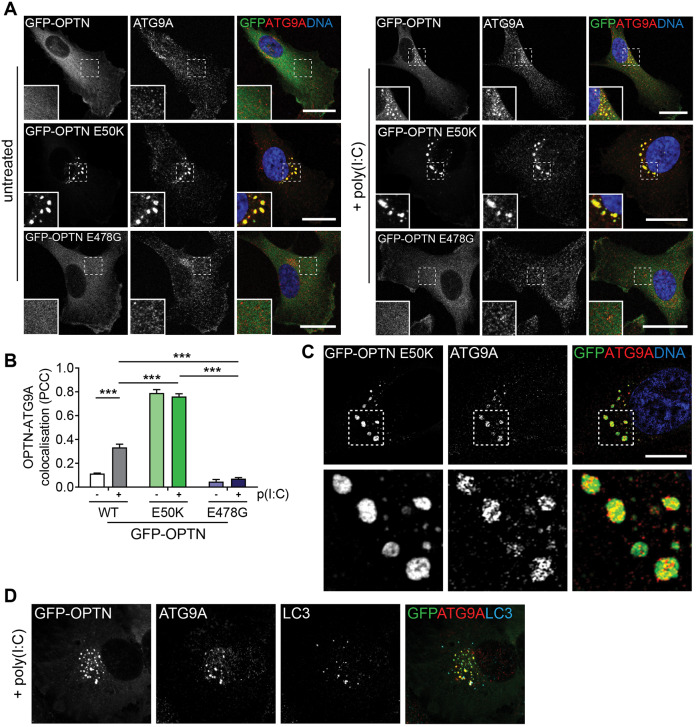Fig. 5.
OPTN-positive vesicle clusters colocalise with ATG9A. (A) Confocal microscopy images of RPE cells stably expressing GFP–OPTN, GFP–OPTN E50K or GFP–OPTN E478G (green) and treated with poly(I:C) for 0 h (left) or 24 h (right). Cells were immunostained with an anti-ATG9A antibody (red) and Hoechst to label DNA (blue). Insets show magnified views of regions indicated by dashed boxes. Scale bars: 20 µm. (B) Pearson's correlation coefficient (PCC) calculated for GFP–OPTN (WT, E50K or E478G) versus ATG9A after treatment with poly(I:C) for 0 and 24 h. Bars represent the mean±s.e.m. of n=3 independent experiments. Cells were quantified from ≥10 randomly selected fields of view. ***P<0.001 (repeated measures ANOVA and a Bonferroni post-hoc test). (C) Structured illumination microscopy image of RPE cells stably expressing GFP–OPTN E50K (green), immunostained with ATG9A antibody (red) and Hoechst to label DNA (blue). Scale bar: 10 µm. Lower panels are magnifications of the regions highlighted above. (D) Confocal microscopy images of RPE cells stably expressing GFP–OPTN (green) and treated with poly(I:C) for 24 h. Cells were immunostained with an ATG9A antibody (red) and LC3 antibody (blue). Scale bar: 15 µm.

